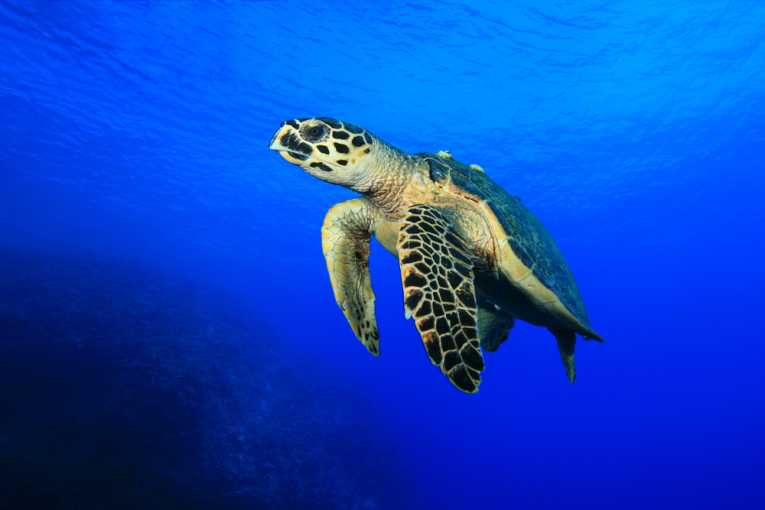While the infamous Great Pacific Garbage Patch may get all the publicity, turtles thousands of miles away in Australia are making their own sad statement to reduce plastics in their marine environment. In all, 267 species of animal are affected by marine rubbish, worldwide. In Queensland, 115 dead turtles have been stranded in the five years between 2006 and 2011. The hawksbill and the green turtle were the two species involved, giving an opportunity to compare small oceanic pelagic feeders with large (and therefore older) benthic turtles of both species.
The green turtle is mostly herbivorous in both the Atlantic and the Pacific races. Hawksbills are unique among turtles in feeding exclusively on sponges and jellyfish. The beaches on North Stradbroke Island and the Sunshine coast were also surveyed between 2009 and 2011. Qamar Schuyler, Britta Denise Hardesty, Chris Wilcox and Kathy Townsend of Queensland University and CSIRO carried out the research in order to investigate the distribution of waste. The beach surveys give an idea of the "environmental availability" of marine wastes although some obviously may not leave the beach.
To fully appreciate the turtles' position, the colour and type of debris were recorded. There has been an increase in plastic over the years up to make up 80% of all debris in some regions. Both entanglement and ingestion are hazards to the wide range of creatures that are in danger. The entanglement often drowns them and causes easy predation or starvation. Ingestion has been found to fatally damage the digestive system or poison the animal with chemicals exuding from the plastic. Dilution of the diet also affects some creatures.
Within the animals' guts, the pollutants were classed as hard plastic, soft plastic, foam, rope/string (actually 85% plastic too), rubber and a miscellaneous class that included glass/metal/paper and cloth. Colour categorisation was important for the plastics, while buoyancy was measured for all classes as positive or negative.

Credit: © PLoS ONE
Above: This graph of debris colour shows how the turtles and beach debris relate, with a predominance of clear plastic shown as attractive to the older benthic (bottom-living) turtles of both species. Obviously this could be a costly mistake by the experienced jellyfish hunters.

A green turtle swims free in Australian waters; Credit: © Shutterstock
The two life history stages varied in their habitat. This caused a large difference in their likelihood of ingesting debris and in the types of debris ingested. The large oceanics must have come across more rubber and hard plastic than the smaller benthic turtles. The rubber involved turned out to be 75% fragments from weather balloons.
Their debris fairly obviously resembled jellyfish or squid which is the prey for the hawksbill especially. All turtles eat Scyphomedusae jellyfish apparently, which explains why both types of turtle are recorded as ingesting a lot of this rubber. Pelagic turtles must have suffered a higher risk of mortality, as they ingest more debris, usually in the top five metres of ocean and also have smaller guts. Post-hatching, the young are quite non-selective in their feeding, taking in buoyant plastic and other material more readily than their older con-specifics.
It's obvious a lot can be done such as targeting pollution with prevention plans and appropriate waste disposal. The oceans are long overdue a credible planning system to prevent further pollution in general terms. These turtles provide useful data from their deaths to furnish those who act positively on the marine environment and its additional multiple problems with fishing, chemicals and acidity.
The full paper To Eat or Not to Eat? Debris Selectivity by Marine Turtles can be read in PLoS ONE.
href="https://earthtimes.org/environment/pollution/index.html">Pollution / Reptiles









